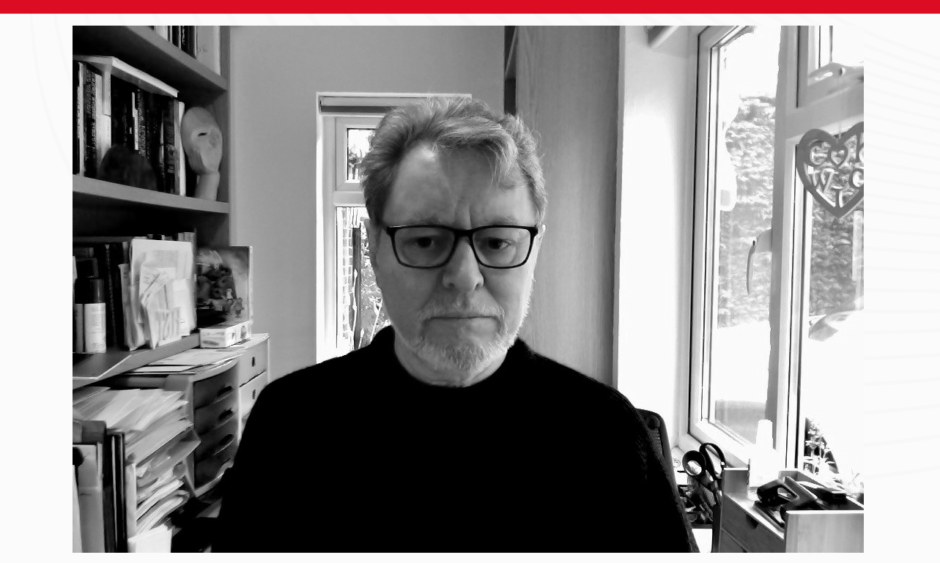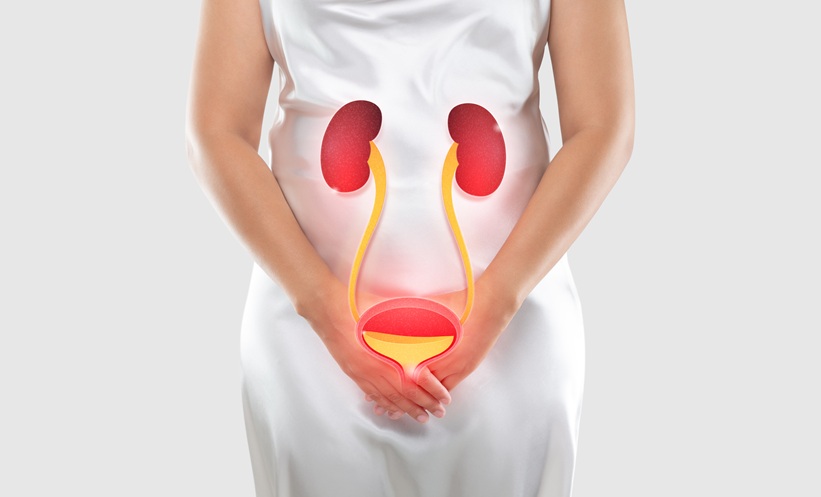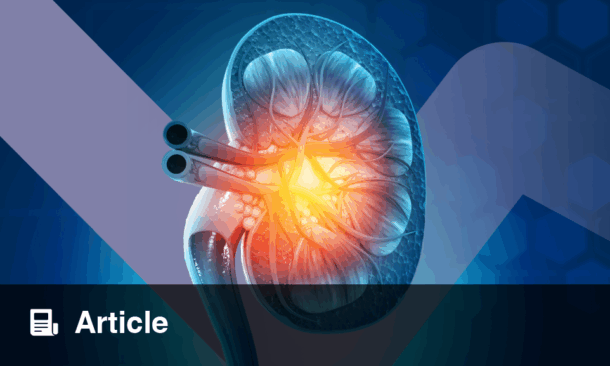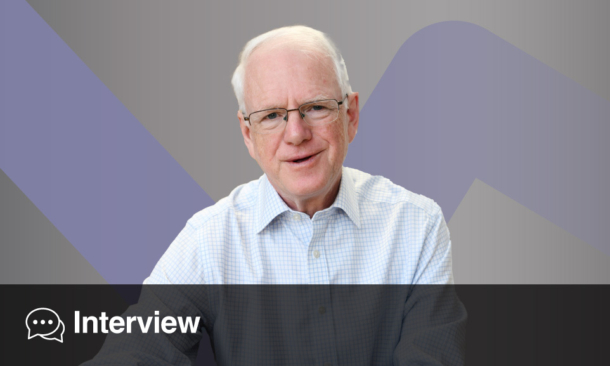Robert John Unwin | Professor Emeritus of Nephrology, former Professor of Nephrology and Physiology, University College London, UK; Scientific Advisory Board member of ERA-EDTA
What led you to pursue a career and specialise in the field of Nephrology?
A longish story. My early ambition in medicine was to be a surgeon, which I think is quite common among medical students, especially male, but I was greatly influenced by my university tutor, who was a neurosurgeon; although he had taken an unusual career path, which was the lesson for me. He had started out as a general physician or internist and then became a neurologist but was frustrated by what he saw as the limits of neurology; while he could make an elegant and often anatomically precise diagnosis, there was little he felt he could actually do for many of his patients and so he decided to train as a surgeon and become a neurosurgeon. He argued that there should be no set career path from A to B and that it should be possible to chop and change and move from A to C to D and then B, according to your interests and emerging talents. Very few medical students or young doctors at the start of their medical careers know exactly where their talents and interests lie in medicine, and they need the opportunity to sample and to change course; this also has the advantage of providing some breadth in medical training by not being forced decide and specialise too early.
Back to me! After graduation, I came under the influence of an eminent Professor of Medicine in London at the time, who described himself as a ‘para-nephrologist’, meaning he was really an internist with an interest in nephrology, but more as physiologist than as a clinician interested in renal immunology or closely involved with kidney transplantation or dialysis. I began my experience of research with him exploring potential physiological and homeostatic links between the gastrointestinal tract and kidneys, and I was eventually sent to the USA to learn more in-depth renal physiology and the experimental technique of single nephron micropuncture. On returning to the UK, still not being trained yet as a ‘card-carrying’ nephrologist, I became for short time a clinical pharmacologist, which did not make a lot of sense with my interest and experience in renal physiology, so I decided to train, late in my career, as a nephrologist and was fortunate enough to be supported by a senior colleague in my ‘re-training’.
So, to answer your question, my interest in physiology and the central role of the kidneys as an organ system in controlling body homeostasis are really what led me into nephrology, and what for me became applied physiology in the care of my patients.
You currently have more than 600 publications to your name for your research in this field. What do you believe to be the current gaps in nephrological literature and what topics merit greater attention?
That seems a rather large number, but if you look at what I have published it is quite broad (a criticism perhaps), covering physiology, pharmacology, hypertension, and kidney stones; some of it original and much of it educational. What are the current gaps in nephrology? Well, the subject is so large and potentially all-encompassing that it is difficult to say with any certainty and there is an inevitable bias; progress is being made on so many fronts. However, I think an important challenge lies in making sense of ‘big data’. Data collection and sophisticated analytical methods, including in data science itself, have almost out-stripped our capacity to make sense of it all, even with the advent of artificial intelligence.
Our capability to make new findings and identify novel and often unexpected associations has leapt ahead of our ability to synthesise, hypothesise, and test, and to apply this newly acquired knowledge to treating patients, which is, of course, the ultimate goal. For example, the major cardio-renal benefit and therapeutic advance from the new class of SGLT2 inhibitors was not anticipated from what was known of its target, a renal glucose transporter, and is still something of a mystery, but has emphasised the importance of a more holistic approach to patient care and management, the part played by serendipity, relying as it does on clinical observation, and the reality of multi-morbidity in our patients. I think we urgently need more (to restore) experimental medicine in human subjects, including patients, to properly assess (prioritise) and understand many of the exciting new findings emerging from basic science, and the analysis of the many large and increasingly available datasets. We have moved away from candidate-based testing of a mechanistic hypothesis to more unbiased data gathering and analysis (necessary ‘fishing’ in my view), but now we need to get back to generating more testable hypotheses, ideally in human subjects much sooner, when safe, than later. In my opinion, physiology and function are still the foundations and should be kept in mind during each future step forward.
You have been a Scientific Advisory Board member of ERA-EDTA since 2016, could you please explain what this position entails and how it contributes to the success of ERA-EDTA society?
The Scientific Advisory Board has an increasingly important function in actively supporting and advising the ERA-EDTA Council in deciding its various scientific awards that recognise the important clinical or research contribution of individuals; its fellowship schemes that provide young nephrologists with the opportunity to work, carry out research, and train in nephrology centres outside their own country, and to help further their career; as well as the ERA-EDTA’s own scientific initiatives through its various designated ERA-EDTA Working Groups; and, of course, guidance on the scientific programme for the annual ERA-EDTA meeting. It is a real privilege to be a current member of the Scientific Advisory Board.
The ERA-EDTA’s mission is: “the advancement of medical science by promoting fundamental and clinical advances in the field of nephrology, dialysis, renal transplantation, hypertension, and related subjects.” How much of an impact do you believe the ERA-EDTA congress has, both directly on nephrologists and indirectly on patients?
The ERA-EDTA has several key functions that I believe provide real benefit to its members and ultimately to patients. The regular newsletter and affiliated journals help publicise smaller sub-specialty meetings and encourage reporting and publication of original work from members and others in allied fields of medicine and surgery. The annual congress brings together nephrologists throughout Europe, but also more widely, and has become a growing international body that stands alongside the American Society of Nephrology (ASN) and International Society of Nephrology (ISN) meetings. Founded initially as a clinical society with a focus mainly on renal replacement therapies, dialysis, and transplantation, its scientific profile has risen significantly in recent years and its meetings are now more balanced between clinical and basic science, and it also provides essential educational courses and activities. The latter are very popular with delegates and are now a regular and integral part of the main congress. Patients benefit from the updates and educational support provided during the congress, as well as the sense of community given to nephrologists, especially those still in training and young investigators, and provides an opportunity for questions to be asked and for experiences to be shared.
This year’s congress was held virtually. What do you believe to be the advantages and disadvantages of a virtual congress?
At first, I thought a virtual meeting would be much less appealing, because you cannot meet colleagues informally or by chance while, for example, moving between sessions or scheduling a chat over a coffee or a meal. However, I realised that while the loss of personal contact cannot be overcome, there are fewer distractions online; you do not lose time moving from one lecture hall to another, and you can rapidly hop between parallel sessions. The technology, apart from the odd glitch, has advanced so much that the speaker and panel members can be seen live, and the presentations are often easier to view than in a large lecture theatre or auditorium with the inevitable distraction of people entering and leaving. You cannot see fellow delegates, of course, but I think it is much easier for delegates to ask a question (type it) online and for the panel to quickly pick up on the questions to select and repeat (which itself is an advantage) and to spot a popular question. In an actual meeting, people are often shy and reluctant to ask questions, which are not always easy to hear or are sometimes not repeated, and the post-presentation discussion can often end up a little stilted. There is also the opportunity to compliment a speaker personally online, which is encouraging and no bad thing!
Finally, it means that everything can be (and now is) recorded and viewed again later. While not a substitute for a physical meeting, I think a virtual meeting held in parallel can widen accessibility for those who cannot attend in person, but who would still like to participate. As with ‘home-working’, I think this will be here to stay in some form.
You presented an insightful session in this year’s congress titled: ‘COVID-19 and history – a perspective from the great influenza pandemic of 1918’. What have been your personal experiences during the COVID-19 pandemic, and what lasting impacts do you predict the pandemic will have on the field of nephrology?
I have not had direct patient contact during the pandemic, but I have been able to work from home with regular online meetings as part of my current work in early drug discovery, including ideas to do with remote monitoring of patients, since most outpatient consultations have been by telephone or online, and I think this will continue in some form for both patient and doctor convenience, and to better manage limited clinical resources. Climate change was a theme of this year’s congress and the smaller carbon footprint from less travel to and from hospitals and clinics is also an important factor.
I have had many discussions with younger colleagues who have been directly involved in patient care and it is clear that even when the pandemic is over, clinical practice will change and there will be fewer routine clinical visits to hospital; we are also yet to see the longer-term health consequences of the COVID-19 infection itself. However, the learnings for me from the 1918 flu pandemic, the subject of my talk, which although at a very different time to our own, were the importance of early and prolonged social distancing and that this could not be eased until, in the case of 1918 flu, there was a more controlled spread of infection that would not overwhelm the medical services available, and until ‘herd immunity’ could be achieved; today, for COVID-19, we have the vaccines to provide safer herd immunity, but we probably need at least 60% coverage of the population before we can lessen current restrictions. Closing schools was an important measure in 1918, as well as banning large public gatherings; quarantine at the time had limited impact and mask-wearing was thought to protect the wearer, rather than those he or she came into contact with. But an interesting finding from 1918 was that while the overall economic impact was significant, as it is now with COVID-19, it did recover quite quickly in the years that followed (until the Great Depression), and those towns and cities that enforced more prolonged social distancing had fewer job losses than those that did not; the argument that there is an either/or choice between health and the economy is misleading: health is the economy.
What are the most significant changes and innovations you have seen in the field of nephrology during your time working with the field?
As mentioned earlier, I think major advances have come from the creation and linking of clinical records and databases, and the establishment of large patient registries, as well as many national patient cohorts for study, and to set up biosample repositories (biobanks). While data protection is essential, I am always impressed by how willing many patients are to participate and to contribute to research, even when they will not benefit directly, at least in the short-term. All this activity has made it possible to analyse patient characteristics in some depth, including genetic factors, and to analyse for disease-related biomarkers using sophisticated analytical methods (proteomics, metabolomics, etc.).
You are currently working on research in diseases of the kidney and nephro-urology. Could you tell us the current stage that the research of this is in, and how it impacts patients diagnosed with kidney disease and other renal conditions?
I am no longer active in basic or clinical research as I was before. I still work with some former collaborators, but I am a step removed from designing or conducting research. In the last few years, I have been working in renal drug development with the pharmaceutical company AstraZeneca, which has given me the valuable opportunity to learn about, and better understand, what is needed to develop new therapies for kidney disease; the many challenges in basic science (confirming what has been published and making new discoveries) and the many difficulties and obstacles in transitioning a new drug for patient care into the clinic.
From my experience to date, I am a firm believer in a partnership between industry and academia, particularly in nephrology, as the best way of advancing and introducing novel and effective therapies for our patients; but we do need more clinical trials in nephrology, both smaller ‘proof-of concept’ trials and larger confirmatory and definitive trials. The generally slow progression of chronic kidney disease can make large studies costly and time-consuming, and some new thinking is required in trial design and implementation. COVID-19 may provide another learning for us in this respect, with the innovative RECOVERY trial design for sequential testing of drug treatments, and it might be something to explore and adapt for future trials in kidney disease.
What would your advice be to the younger generation who are following the same path and just beginning their career in this discipline. Where do you hope they will take the field of nephrology over the coming decades?
Be flexible and follow what interests you and what you are comfortable with, but always keep patients in mind; what you might do for them and what you can learn from them – a truism, I know, but every patient’s story is different and always a rich source of the unusual or unexpected. We do learn from, and tend to remember, our patients.
Nephrology is perhaps the last bastion of general or internal medicine, because chronic kidney disease is either associated with or impacts almost every other organ system, and its management requires a broad and fairly comprehensive understanding of most other medical specialties. This makes nephrology an intellectually very attractive and stimulating discipline to take up and is attracting some of our best minds and most talented young physicians and research investigators. However, it is disappointing that so far, no drug has reached the clinic intended for the treatment of kidney disease from the outset; most of the current treatments used in nephrology have been adopted and adapted, apart perhaps from erythropoietin to treat anaemia.
I hope the next generation of renal scientists and nephrologists will help identify and test drug targets that cannot only slow kidney disease progression, but can also halt or even reverse it. Renal cell biology is revealing new opportunities for cell-based therapies and tissue regeneration, and the future is exciting with so much that is new for us to understand, to explore, and to contextualise.






